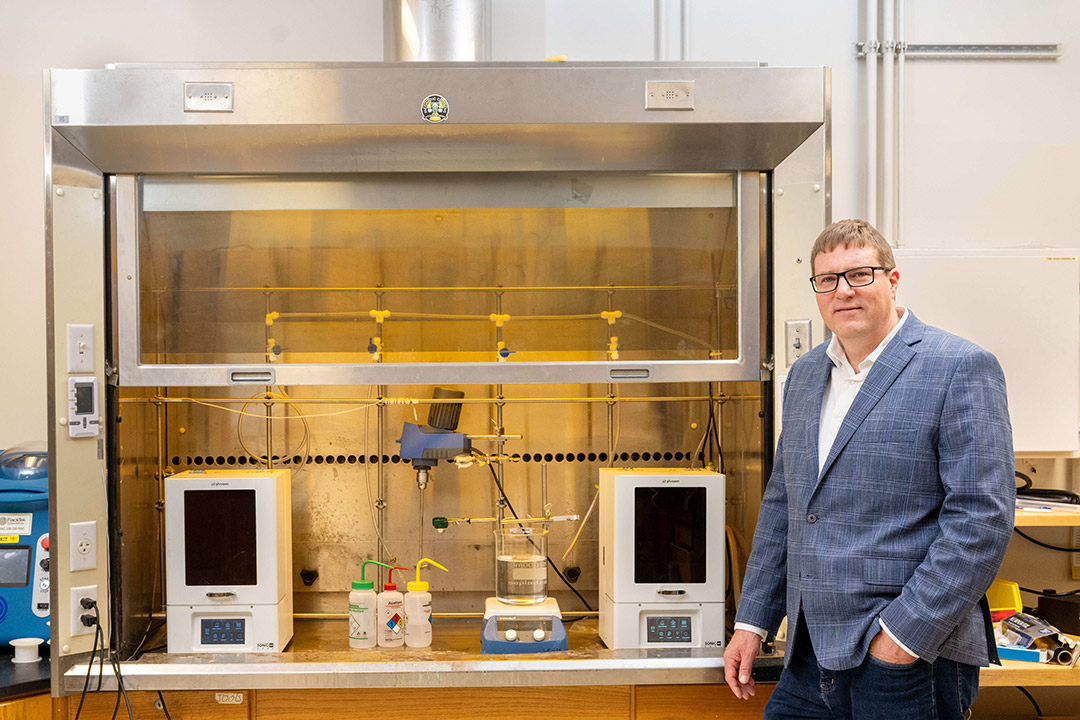According to RIT, researchers are developing sElven healing materials to improve 3D printed products – making them stronger and more resilient. Christopher Lewis and members of his research team have developed a stimulus-responsive photopolymer solution – liquid resins with a similar texture to superglue – that, once printed, has the ability to self-heal if damaged.
Nowadays there is a lot of interest in materials that can heal or repair themselves. With 3D printing, the ability to build more reliable parts with these healing effects can benefit multiple industries and provide cost savings. Companies can be more confident in the strength of the materials used in high-precision devices such as printed electronics, soft robotics or prosthetics for the aerospace, automotive and biomedical sectors.
“When you break a bone or cut yourself, we assume that there is a self-repair mechanism that allows bone or skin to at least partially renew itself,” said Lewis, associate professor and Russell C. McCarthy Endowed Professor in RIT's College of Engineering Technology. “We are also learning that this does not apply to synthetic materials or man-made objects. And our work with self-healing materials is a futuristic look at how we can develop systems that mimic these natural material properties.”
Over time, 3D printed objects can crack – especially those used in load-bearing applications. To make matters worse, many of the materials used in 3D printing are inherently brittle. Without intervention, the structures can fail. The team discovered that combining a thermoplastic agent with a UV-curable resin enables a stronger 3D printing process while creating a mixture that reinforces cracked areas.
“This makes the material much stronger than it used to be. One of the problems with these soft elastomeric materials is that they are traditionally weak. And it also creates another type of property – shape memory behavior, and we are just beginning to focus our efforts on understanding this behavior better,” Lewis said.
Lewis, who spearheaded this work for several years, received funding from the U.S. Department of Defense and worked with scientists at RIT's AMPrint Center to test how self-healing materials complement 3D printing processes. He and co-authors Vincent Mei and Kory Schimmelpfennig, graduate students at RIT, reported extensively on the work in several journals, including ACS Applied Polymer Materials.
The challenge is to regulate the viscosity of the reaction resin and ensure that all materials are soluble and light-sensitive.
“We took an approach where we have a mixture of two different things. We have our photoreactive thermoset polymer, which when cured becomes a soft rubber. To that we also add a thermoplastic cure. We were able to pass light through the system, and we did that by using polymerization-induced phase separation (PIPS), which is a process where the thermoset and thermoplastic materials separate.” Healing,” he said. “That's the key to this whole thing.”
PIPS is a single, segmented function in which an optically transparent liquid allows light to pass through. As the UV resin hardens, the thermoplastic phase separates. Lewis compared this final phase-separated structure to a lava lamp that changes when lit or heated. It is similar to the polymers that transform when incorporated into 3D printing and each layer hardens.
“Previous work on thermoplastic polymer blends that can be processed using traditional techniques such as injection molding or extrusion suggested that it was this phase separation that seemed to drive the self-healing behavior of these systems. This understanding led us down the path of experimenting with the same healing agent and the same photoreactive polymer system and then getting lucky,” Lewis said.
